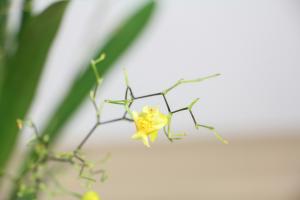Which Process in the Water Cycle Removes Water from Plants
The water cycle is a continuous process that involves the movement of water from one place to another, driven by the sun's energy. It includes processes like evaporation, transpiration, condensation, precipitation, and groundwater flow. One critical component of the water cycle is the process by which plants take in water from the soil, use it for various purposes like photosynthesis, and release it back into the atmosphere. This process is called transpiration, and it plays a significant role in the overall movement of water in the environment.
What is Transpiration?
Transpiration is the process by which water is transported from the soil through the roots of plants and then released into the atmosphere through small openings on the surface of leaves. The water uptake by plants is driven by the potential difference between the soil and the air surrounding the leaves. As water is transported up through the plant's xylem, it is lost to the atmosphere through tiny pores called stomata.
How does Transpiration Work?
Transpiration is a complex process that involves several factors like temperature, humidity, wind speed, and the plant's anatomy. The water uptake by plants is driven by the potential difference or gradient in water concentration between the soil and the plant's roots. The rate of transpiration is influenced by environmental factors like temperature, humidity, wind speed, and sunlight intensity. When the air is dry and hot, plants lose more water through transpiration, and when it is cool and humid, they lose less water.
Why is Transpiration Important?
Transpiration plays a crucial role in the water cycle by helping to regulate the temperature of the environment and replenishing the atmosphere with moisture. It also helps to facilitate the movement of nutrients and minerals from the soil into the plant's tissues. Furthermore, transpiration helps to prevent water stress and wilting in plants by maintaining a balance between water uptake and loss. Plants that undergo stress from lack of water can experience stunted growth and reduced productivity, negatively impacting the ecosystem.
The Impact of Transpiration
Transpiration has an essential impact on the water cycle and the environment as a whole. It helps to regulate the temperature, humidity, and moisture levels of the surrounding environment, protecting it from extreme weather conditions like drought and heatwaves. It also plays a vital role in the carbon cycle by facilitating the uptake of carbon dioxide from the atmosphere by plants, helping to reduce the overall concentration of greenhouse gases in the atmosphere. Transpiration is also an essential component of agriculture, contributing to the growth of crops and forests.
Conclusion
In conclusion, transpiration is the process by which water is transported from the soil through the roots of plants and then released into the atmosphere through small openings on the surface of leaves. It plays an essential role in the water cycle and the overall movement of water in the environment. By facilitating the uptake of nutrients and minerals from the soil into the plant's tissues, maintaining moisture levels in the environment, and helping to regulate the temperature, transpiration is a crucial component of the ecosystem.

 how many times do yo...
how many times do yo... how many planted tre...
how many planted tre... how many pine trees ...
how many pine trees ... how many pecan trees...
how many pecan trees... how many plants comp...
how many plants comp... how many plants can ...
how many plants can ... how many plants and ...
how many plants and ... how many pepper plan...
how many pepper plan...































